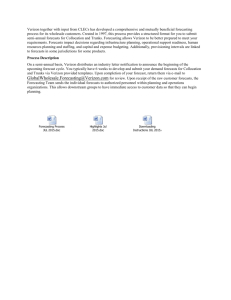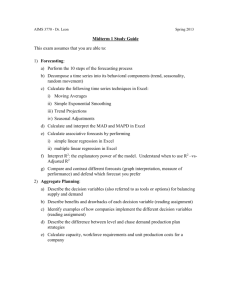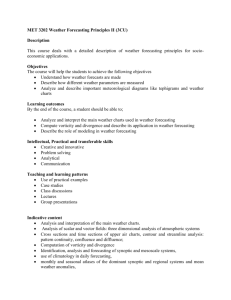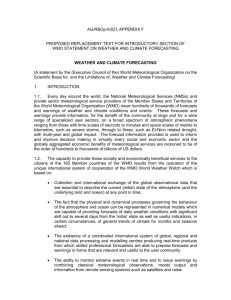MET 2202 Weather Forecasting Principles I
advertisement
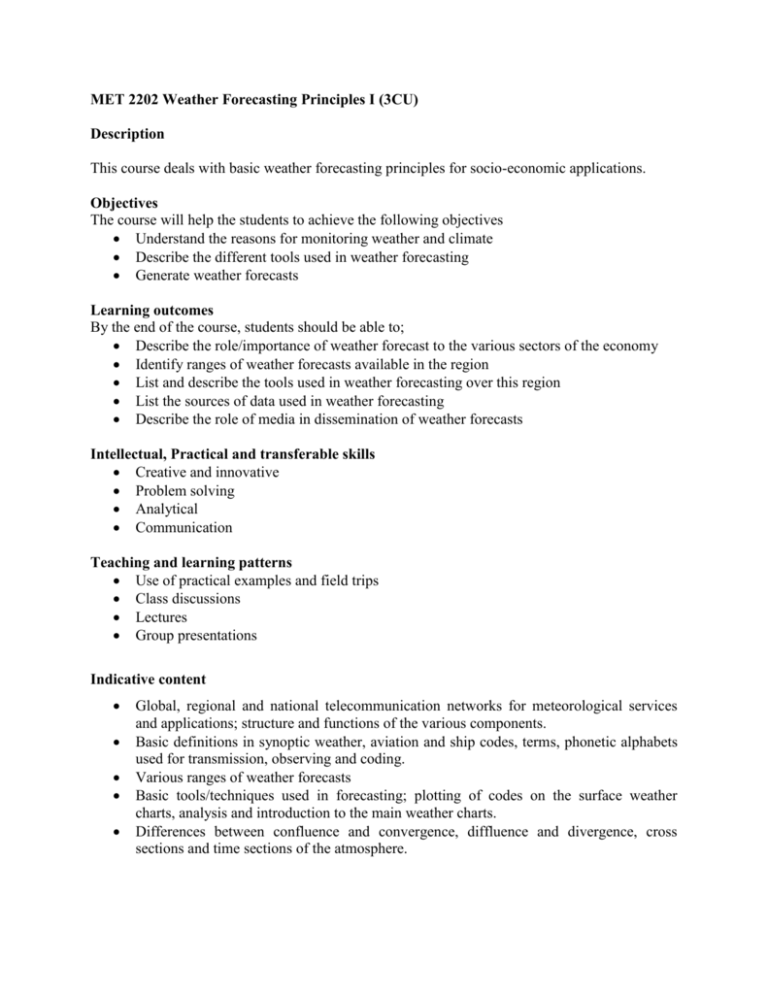
MET 2202 Weather Forecasting Principles I (3CU) Description This course deals with basic weather forecasting principles for socio-economic applications. Objectives The course will help the students to achieve the following objectives Understand the reasons for monitoring weather and climate Describe the different tools used in weather forecasting Generate weather forecasts Learning outcomes By the end of the course, students should be able to; Describe the role/importance of weather forecast to the various sectors of the economy Identify ranges of weather forecasts available in the region List and describe the tools used in weather forecasting over this region List the sources of data used in weather forecasting Describe the role of media in dissemination of weather forecasts Intellectual, Practical and transferable skills Creative and innovative Problem solving Analytical Communication Teaching and learning patterns Use of practical examples and field trips Class discussions Lectures Group presentations Indicative content Global, regional and national telecommunication networks for meteorological services and applications; structure and functions of the various components. Basic definitions in synoptic weather, aviation and ship codes, terms, phonetic alphabets used for transmission, observing and coding. Various ranges of weather forecasts Basic tools/techniques used in forecasting; plotting of codes on the surface weather charts, analysis and introduction to the main weather charts. Differences between confluence and convergence, diffluence and divergence, cross sections and time sections of the atmosphere. Data used to generate weather forecasts: Introduction to the use of other forecasting tools; meteograms, tephigrams and satellite pictures. Pilot balloon measurements, processing of pilot balloon data. Cloud classification and precipitation mechanism. Dissemination and applications of weather forecasts Practical: Plotting and interpretation of weather charts. Assessment Method The assessment method is structured to include course work, and final examination. Course work consists of assignments, reports, practicals and tests and accounts for 40% of the final grade. The final examination will account for 60% of the final grading Core Reference materials George E. P. Box and Gwilym M. Jenkins (2008): Time Series Analysis: Forecasting and Control, John Wiley. Mike M.N. Mwebesa (1976): East African Observer's Handbook, (handbook of standard procedures for surface weather observing and recording of climatological data) Rev. ed. East African Community, East African Meteorological Dept. in Nairobi. WMO (1997)): Mesometeorology and Short-Range Forecasting, WMO bulletin, Vol 46.



